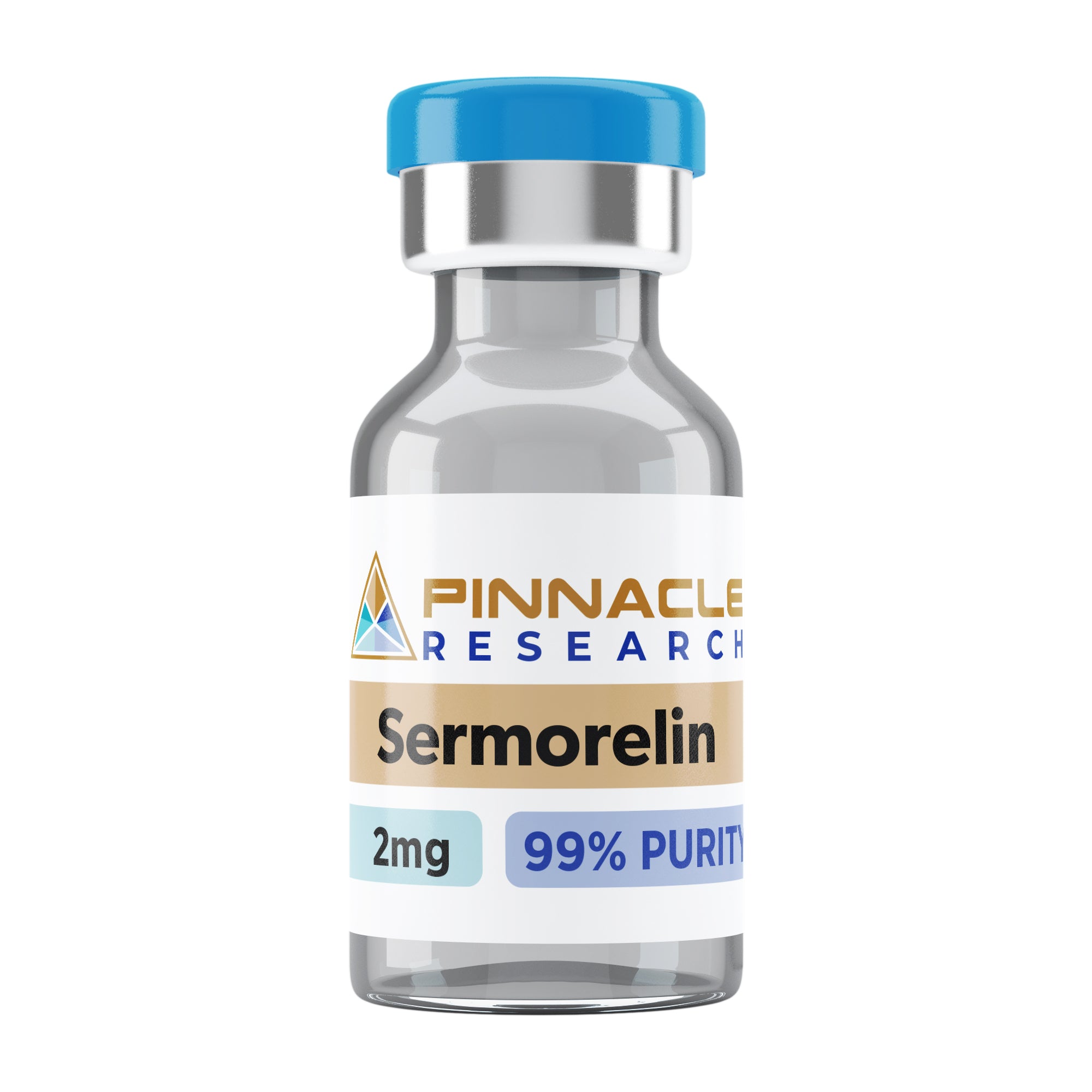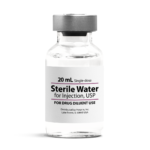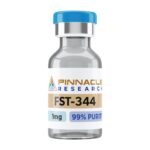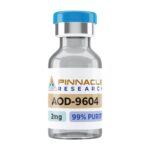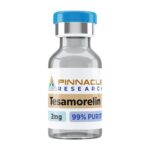About Sermorelin
Sermorelin is an analog of the growth hormone-releasing hormone (GHRH). It was developed to clinically investigate and get a deeper insight into the growth hormone. Researchers are also investigating its potential use in improving bone density, reducing scarring, fighting dementia effects, and reducing seizure activity.
What Is Sermorelin?
Sermorelin is one of the many analogs of the growth-hormone-releasing hormone (GHRH). Like most analogs of GHRH, Sermorelin was developed to retain the fantastic benefits of GHRH while eliminating the negative traits of the growth hormone. Sermorelin is also called Geref and is clinically used to assess growth hormone secretion. Apart from that, the peptide has been linked with the following health benefits:
- Reducing scarring after a heart attack,
- Improving renal function,
- Reducing seizure activity
- Fighting the effects and symptoms of dementia
- Improving nutrition in patients with chronic illness
- Increasing bone density,
Sermorelin Peptide Chemical Structure
- Sequence: Tyr-Ala-Asp-Ala-lle-Phe-DL-Thr-Asn-Ser-Tyr-Arg-Lys-Val-Leu-Gly-Gln-Leu-Ser-Ala-Arg-Lys-Leu-Leu-Gln-Asp-Ile-Met-Ser-Arg-NH2
- Molecular Formula: C149H246N44O42S
- Molecular Weight: 3357.933 g/mol
Sermorelin Peptide Research and Effects
Improving Cardiovascular Health
Heart attacks are one of the most terminal health complications in human history. Apart from being life-threatening, it can cause long-term or permanent disability. Other secondary effects of a heart attack include cardiac conduction abnormalities (arrhythmias), pain, reduced exercise capacity, and heart failure. Most complications observed after a heart attack result from the cardiac remodeling process, which occurs after the heart muscle cells (myocytes) are damaged. Cardiac remodeling also causes scarring on the damaged area after a heart attack and surrounding areas.
Additionally, cardiac remodeling can cause other heart or body function complications after a heart attack. Scientists believe that inhibiting cardiac remodeling can help prevent some of the adverse effects of a heart attack. It can also enhance a speedier recovery immediately after a heart attack and in the long run.
In 2016 researchers did a scientific study on pigs, revealing that the administration of sermorelin reduced cardiac remodeling after a heart attack. Further findings from the study showed that the Sermorelin peptide:
- Reduced cell death in cardiomyocytes.
- It increases extracellular matrix component production, which is helpful in the heart-healing process.
- The damaged heart tissues experienced increased growth of the blood vessels, thus increasing the blood supply.
- There was a substantial reduction in the production of agents, which caused damaging inflammation.
Scientists believe Sermorelin has the best results in the following key areas, increasing capillary growth, improving diastolic function, and reducing scar size. There are currently ongoing studies investigating the Sermorelin peptide’s health benefits in improving overall cardiovascular health by treating other heart complications and conditions. The essential ears being focused on are heart failure and valve disorders. The growth hormone-releasing hormone treatment minimizes scar mass.
Epilepsy Treatment
Gamma-aminobutyric acid (GABA) is a signaling molecule in the central nervous system. One of its principal functions is reducing the electrical activities in the spinal cord and overall electrical excitability present in the body’s central nervous system. Different anti-seizure medications are used in treating the symptoms of epilepsy. These medications functions in primary ways:
- Increasing the levels of Gamma-aminobutyric acid in the central nervous system or
- Binding to the GABA receptors and triggering effects similar to those of the Gamma-aminobutyric acid.
In a recent study involving mice with epilepsy, scientists ingested the mice with GHRH analogs similar to sermorelin. The study investigated the effects of these GHRH analogs on seizure activity. Observations from the study revealed that the peptides could activate the Gamma-aminobutyric acid and suppress the onset of seizures. These findings have given scientists a new avenue for developing anti-seizure medications which don’t have detrimental side effects which might affect their use.
Improving Sleep
There is substantial scientific evidence that confirms that sleep cycles and patterns are affected by orexin. Orexin is produced by the brain and is a potent neurochemical. It’s also confirmed that our bodies undergo growth and healing when we sleep. Growth hormone secretion substantially affects every body’s growth and healing. A past study in rainbow trout speculates that there might be a connection between GHRH and orexin’s healthy secretion and functionality. Additionally, the research revealed that when the Sermorelin peptide and other GHRH agonists were exogenously administered to the test subjects, there was a massive boost in the orexin secretion. The study has facilitated various research studies that focus on how the Sermorelin peptide can be used to treat sleep disorders.
Growth Hormone
The Sermorelin peptide is an analog of GHRH, having most of the desired effects of the hormone and zero adverse effects. There it produces the same effects experienced with GH, like increasing lean muscle mass, reducing adipose tissues, and enhancing long bone growth. Even though Sermorelin and GH have the same benefits, the side effects aren’t the same. Researchers highly recommend Sermorelin in enhancing the GH levels in humans, compared to exogenous administration of the hormone itself. The Sermorelin peptide is most preferred because of the physiological feedback mechanisms, which inhibit the side effects frequently experienced with GH administration. Some of the side effects experienced with GH administration include:
- Edema,
- Joint pain,
- Dysregulation of the body’s normal physiology
Apart from that, patients using the GH treatment option tend to have problems with overdosing.
Another key reason why Sermorelin is preferred is that it doesn’t cause tachyphylaxis. Tachyphylaxis is a biological process where the body gets accustomed to medication and hence requires the dosage to be increased frequently to maintain the effectiveness of the medication. There are instances when tachyphylaxis becomes very severe where doctors recommend a complete cessation of the drug’s usage to regain the medication’s potent effects.
When Sermorelin is administered, it doesn’t downgrade the production of the GHRH receptors. Instead, it increases the production rate. The process ensures that the Sermorelin effects on the body are maintained for a prolonged time, even with low dosages.
The Sermorelin peptide is one the best analogs of the growth hormone-releasing hormone. It has excellent potential to improve overall heart health, especially after a heart attack. The compound has been linked with other health benefits like improving sleep, treating epilepsy, and triggering the same facets as the growth hormone. Sermorelin is still under investigation and isn’t approved by the FDA; thus, it is categorized as a research compound. When administered to mice during the various research studies, Sermorelin exhibited excellent subcutaneous bioavailability, moderate side effects, and low oral. However, the dosage used in mice doesn’t scale up to the dosage expected to be used by humans.
Currently, Sermorelin isn’t recommended for human consumption until the FDA approves it. Nevertheless, you can continue following the findings and studies on the peptide.
